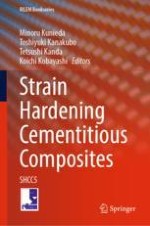2023 | OriginalPaper | Chapter
A Depth-Dependent Fiber-Bridging Model to Predict the Tensile Properties Recovery Induced by the Self-healing of Strain-Hardening Cementitious Composites
Authors : Yangqing Liu, Bo Wu, Jishen Qiu
Published in: Strain Hardening Cementitious Composites
Publisher: Springer International Publishing
Activate our intelligent search to find suitable subject content or patents.
Select sections of text to find matching patents with Artificial Intelligence. powered by
Select sections of text to find additional relevant content using AI-assisted search. powered by
